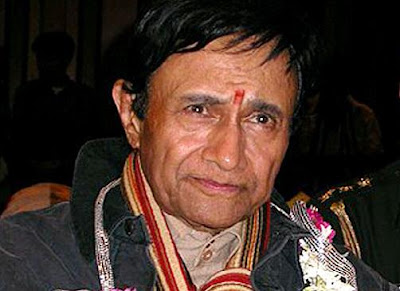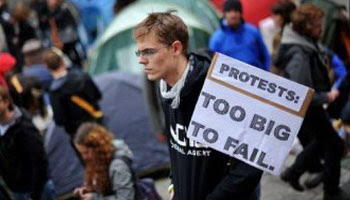Schools in many parts of Scotland were shut today as the country braced itself for hurricane-force winds.








Coastal areas will be hardest hit by the westerly wind and gusts have already reached 54mph in Crosby, near Southport, and 56mph in Hawarden, Deeside.
Early morning services from Hull and Harrogate began instead from Doncaster and Leeds respectively, while services north of Newcastle were being provided using diesel trains only. Some services between London and Newcastle were expected to be slower than normal due to speed restrictions.
He said any essential journeys should be planned, and motorists should make sure they have warm clothes and food with them in case they get stuck.
Winds of up to 100mph have been forecast, with the strongest gusts expected to hit the west of Scotland and the central belt from 12pm, and from 3pm in the east, hitting rush-hour traffic.
The Government warned that travel conditions could be "dangerous" and road users may experience severe delays of several hours or more.
Key travel routes are likely to be closed and severe gales could lead police to advise against all travel, the Scottish Government said.
High waves batter the coastline at Helensburgh (Pic: PA)
Although Scotland will bear the brunt of the bad weather, other parts of the UK could also be affected by strong winds.
Lindsay Dovey, a forecaster with MeteoGroup, the weather division of the Press Association, said: "There will be gusts of 100mph in north west Scotland and over high ground. "Gusts of up to 70mph are expected in northern England and north west Wales. "Across central England and East Anglia, we'll have gusts of 55 to 60mph, and up to 55mph in the south of the UK."
Strong winds and high waves batter the coastline at Blackpool (Pic: PA)
A couple walk along a wet and windy promenade in Blackpool (Pic: PA)
She said temperatures would range between 7C, in Scotland, and 13C, in the south of Britain, but added: "It will feel much colder because of the wind." All classes at Glasgow and Strathclyde universities were cancelled, affecting thousands of students. Glasgow Caledonian university was open, but asked students to take travel advice if they planned to come in. The weather also brought disruption to the country's transport network.
The Forth Bridge is expected to close after 3pm as a precaution against the high winds.
The bridge is likely to be closed to high-sided vehicles, motorcycles, pedestrians, and cars with trailers, roof boxes or caravans for much of the day. Drivers were told to "exercise extreme caution" and to check conditions before travelling.
Largs promenade is battered by winds (Pic: Getty Images)
A man walks his dog along the promenade in Largs (Pic: Getty Images)
Part of the A8 in Renfrewshire was closed between the Langbank roundabout and the Woodhall roundabout in both directions because of flooding.
ScotRail and Network Rail said speed restrictions of 50mph may be put in place from 10am today. Caledonian MacBrayne ferry services to North Uist, Harris, Mull, Islay, Gigha, Coll and Tiree, and Arran were cancelled, and other sailings severely disrupted.
Scotland's Deputy First Minister Nicola Sturgeon said: "The very latest information from the Met Office's chief forecaster shows that we can expect very severe gales, at wind speeds not seen for many years, across large parts of western, central and southern Scotland throughout Thursday.
Rough seas batter the beach in front of Central Pier in Blackpool (Pic: PA)
"On the basis of the earlier red warning from the Met Office, some councils had already taken the precaution of closing schools early to make sure that parents can safely collect children before the most dangerous weather and travel conditions arrive.
"In light of the latest forecast, and in particular the timings which suggest the severe weather affecting the west-central part of the country earlier than originally anticipated, some of these closure timings may have to change.
"The decision is a matter for individual authorities but the warnings are of the highest level of seriousness and we are clear that safety has to be the paramount issue. "Parents should check locally through websites, local radio and with their schools to find out the specific situation with their own schools.
"All commuters are advised that if they can adjust their working pattern to reflect the latest weather and travel advice, or work from home, that would be a very sensible step to help avoid possible traffic disruption.
"The authorities are all working hard to keep Scotland moving." Dumfries and Galloway police warned of hazardous conditions throughout the area, with surface water and flooding on roads.
A spokesman said the A74 in Moffat was particularly bad, with standing water causing delays in both directions. He urged people not to drive and warned conditions will get more dangerous as the day goes on.
A car drives on a flooded road in Glasgow (Pic: PA)
Water was also building up on the surface of the M8 between Livingston and Hermiston Gait in Edinburgh.
In Stirlingshire, the M9 was also restricted in both directions between junction 9 at Bannockburn and junction 11 at Dunblane because of surface water.
In Tayside, snow closed the Spittal of Glenshee area and flooding is being reported on the A9. ScotRail introduced speed restrictions of 50mph on all trains in case of falling trees and other debris, and damage to overhead power lines.
Steve Montgomery, ScotRail's managing director, said: "We will constantly review weather forecasts and respond accordingly. Our aim is to ensure as robust a service as possible.
"The forecasts are that the peak of the high winds will be in the afternoon and early evening. If that happens, it would be a sensible step to allow more time for journeys, to keep checking our website and where possible, leave work earlier to avoid rush hour."
Trains between Aberdeen and Inverurie, Glasgow and Dunblane, and Edinburgh and Glenrothes were cancelled, while other trains will run less frequently than usual. Glasgow Caledonian University later said it will close "all but vital services" from 12.30pm.
Flooding in Helensburgh, Scotland (Pic: PA)
Of Scotland's 32 local authorities, Aberdeen City Council, Angus Council, Dundee City Council, Scottish Borders Council, Shetland Islands Council and Orkney Islands Council have no plans to close schools today.
All schools in nine local authorities have closed, with the rest expecting to shut their doors at 12pm.
Weather forecasters said the low pressure over the Western Isles was causing strong winds as far south as Merseyside and north Wales.
Coastal areas will be hardest hit by the westerly wind and gusts have already reached 54mph in Crosby, near Southport, and 56mph in Hawarden, Deeside.
The wind speeds are expected at peak at about 65mph or higher later today. The Highways Agency has issued an "amber alert" in north-west England, warning that the worst wind conditions can be expected in Cumbria.
Officials have closed the A66 between Scotch Corner and Penrith to high-sided vehicles. A spokesman said: "Drivers of these vehicles should seek alternative trans-Pennine routes including the A69 and M62 as well as the A65.
"The Highways Agency has set signs across the regional motorway network, including the M6 to advise drivers of the restriction." The East Coast train company said there were extended journey times on its services north of Edinburgh due to 50mph speed restrictions.
Early morning services from Hull and Harrogate began instead from Doncaster and Leeds respectively, while services north of Newcastle were being provided using diesel trains only. Some services between London and Newcastle were expected to be slower than normal due to speed restrictions.
East Coast's direct service this evening to Hull, Brough and Selby will terminate at Doncaster, while this evening's direct service to Harrogate and Horsforth will terminate at Leeds.
Services operated by the CrossCountry, First TransPennine Express and Virgin train companies were also affected by the speed restrictions as well as flooding which hit services in the Penrith area of Cumbria.
The Erskine Bridge, linking Renfrewshire and Dunbartonshire across the River Clyde, was closed as high winds hit. The Forth Road Bridge, spanning the Firth of Forth between Edinburgh and Fife, was also shut.
The A78, between Skelmorlie and Largs in Ayrshire, was also closed as the carriageway flooded.
As the winds picked up, Glasgow University decided to close until tomorrow.
A spokesman said: "The university of Glasgow has decided to close with immediate effect. The university will open as normal tomorrow, with all scheduled classes and exams going ahead as planned. Exams that were postponed today will be rescheduled for the week beginning January 9."
A number of royal engagements in Scotland and the North East have been cancelled due to the dangerous winds, said a Buckingham Palace spokesman.
The Countess of Wessex has been forced to postpone two visits in County Durham - to the town of Billingham and a meeting in Durham in connection with her role as patron of the Sunderland Association Football Club Foundation.
The spokesman said the bad weather meant her flight to the region had been cancelled but that other travel arrangements had been made and she would still take part in events later this afternoon and evening.
The Duke of Gloucester's day of engagements in Glasgow have all been cancelled and would, apart from a Christmas carol concert at Glasgow Cathedral, be moved to the New Year. The A66 which links County Durham and Cumbria was closed to all vehicles due to the high winds, police said. Roads in Weardale were subject to localised flooding as fellside streams struggled to cope with melting snow and heavy rains.
Strathclyde Police Chief Inspector Stewart Campbell said people should only travel if their journey is essential and advised them to stay indoors.
He said any essential journeys should be planned, and motorists should make sure they have warm clothes and food with them in case they get stuck.
The travel warning stretched across the central belt, from Strathclyde to Lothian and Borders, and also applies to pedestrians who may be at risk of being hit by objects blown by high winds.
Central Scotland Police Assistant Chief Constable Allan Moffat said: "The advice for motorists across the central belt of Scotland is to avoid travel as the severe weather moves across the country from west to east, starting around noon on the west side of the country. It is expected that the impact of the weather will affect the east side of the country from 2pm onwards.
"This advice to avoid travel is not given lightly but is based on the clearest information yet from weather forecasters that there will be high winds with gusts of up to 90mph.
"The time frame for these exceptional conditions is between noon and 7pm and I am being given clear information that a wide area of Scotland will be affected. People could be putting themselves at considerable risk by travelling in these conditions.
"The predicted impact of the wind is such that it may cause structural damage and is a specific danger to high-sided road vehicles. I would ask the public to pay close attention to weather and road updates and act accordingly to the advice given.
"I recognise that this is a significant statement, however it is based upon the premise of ensuring public safety and minimising the risk to road users in the affected areas."
News by Mirror
Read current news at http://bbc-cnn-worldnews.blogspot.com














